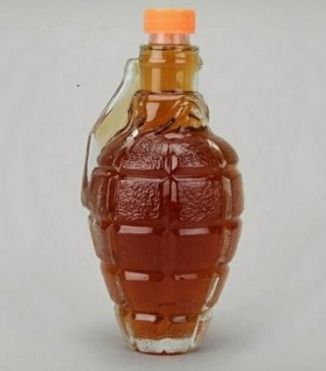Rich, I'm confused by your posts a little, so am probably not responding to your questions very helpfully. I would never pasteurize homebrewed beer or 'stabilize' it chemically. Why do you want to backsweeten beer, when you can make it as sweet as you want without doing so? If you want to clone a commercial sweet beer, I would make a sweet beer, not a backsweetened beer.
Sorry, I probably haven't done a good job of explaining myself. The recipe I'm about to talk about is here:
Kasteel Rouge is a beer that has had a cherry liqueur added. My wife and I love this beer, so I'm trying to clone it.
I've chosen to go the route of making the base beer, fermenting it as dry as the Belgian Strong style recommends, and then adding cherry cordial liqueur.
Cherry cordial liqueur (like most liqueurs) is quite sweet, being made from cherries, alcohol like vodka, and fructose and/or sucrose (probably high-fructose corn syrup). This means that adding it to unstabilized, unpasteurized beer bottles will cause them to ferment, acting like priming sugar.
Having had Kasteel Rouge several times, it's very clearly sweetened by the cherry liqueur, so I don't want the liqueur's sweetness consumed by the bottle conditioning process. It's also not an option to simply make the beer sweeter by recipe design.
My wife and I can taste off flavors from Splenda and Nutrasweet, and I know for a fact that Xylitol can have laxative properties when consumed in any quantity. So making my own unfermentable cherry cordial liqueur with one of these sweeteners isn't a way I want to go.
To get around this, I am/was planning to keg the beer & liqueur mixture, chill and carbonate it in the keg, and then bottle from the keg for aging.
The issue is: how to prevent the sugar in the liqueur from being consumed, overcarbonating the bottles and possibly creating bottle bombs?
At this point I'm looking at giving up on bottling this beer altogether and aging in/serving from the keg after putting in the cherry cordial liqueur.
Another option someone recommended is sterile filtering the beer before adding the liqueur, knocking the yeast population so low it can't restart fermenting.
-Rich












![Craft A Brew - Safale BE-256 Yeast - Fermentis - Belgian Ale Dry Yeast - For Belgian & Strong Ales - Ingredients for Home Brewing - Beer Making Supplies - [3 Pack]](https://m.media-amazon.com/images/I/51bcKEwQmWL._SL500_.jpg)

















































